Search results for 'material pigment'
-
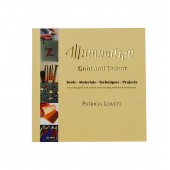
Illumination Gold and Colour Book
£15.00Patricia Lovett is one of the world’s leading authorities on the techniques and practical processes of making mediæval manuscripts. She lectures and teaches all over the world on calligraphy and illumination, and has written about a dozen books on these subjects, as well as producing a DVD – Illumination – Tools, Materials, Techniques, Projects. Patricia has run calligraphy courses as well as those on traditional manuscript gilding and painting techniques, and was awarded an MBE for her services to heritage crafts and calligraphy. This book takes the beginner and those with more experience through step-by-step processes to produce simple and easy projects using cheap metals and modern adhesives, and also to create mediæval miniatures and illuminated scrolls on vellum (animal skin). Learn More -
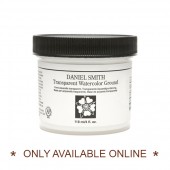
Daniel Smith Watercolour Ground Transparent 4oz
£10.30Daniel Smith Watercolour Ground creates a soft, absorbent watercolour surface with a slightly cottony texture that's similar to cold pressed paper. With this breakthrough archival quality ground, you can rescue flawed paintings, create new work on any surface, lift and scrub without damaging the painting surface. *Please note, this product is stored offsite. Please allow extra time for your order to be processed and dispatched. Learn More -
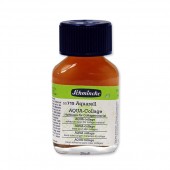
Schmincke AQUA Collage Medium
Starting at: £9.60
Increases adhesion of light collage materials - textiles, paper, pigments, sand etc. Can be used with AQUA Fix to become waterproof. Learn More -
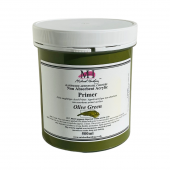
Michael Harding Non Absorbent Acrylic Primer - Colours
Starting at: £21.20
Michael Harding Non-Absorbent Acrylic Primer (NAAP) is a versatile product suitable for application on various surfaces, including linen, wood, MDF, and more. It is designed to create a robust, flexible, permanent, and intensely pigmented ground, making it an excellent choice for both acrylic and oil paints. Important Application Guidelines: Support Selection: NAAP should not be applied over surfaces treated with rabbit skin/hide glue or on unsound, flimsy supports such as cardboard. Opt for stable substrates to ensure the primer’s effectiveness. Not a Gesso: Please note that NAAP is a primer, not a gesso. As such, there is no need for additional gessoes, sizes, or other ancillary products when using NAAP. DIRECTIONS: Coat Application: Apply a minimum of two coats of NAAP to your chosen support, ensuring liberal coverage for optimal results. Dilution for Flow: If you desire increased flow, dilute NAAP with a mixture of 1 part water to 4 parts NAAP. This adjustment allows for customization based on your artistic preferences. Second Coat Application: Apply the second coat once the first coat is touch dry, typically after approximately 1 hour. This step contributes to the creation of a well-prepared painting surface. Additional Considerations: Suitable Supports: Do not use Michael Harding Non-Absorbent Acrylic Primer on flimsy or unsound supports. It is crucial to choose a stable and well-prepared surface for priming to ensure the longevity and integrity of your artwork. Canvas Weave Consideration: Avoid using this primer on canvases with a wide weave. The non-absorbent nature of the primer may not be suitable for canvases with a loose or open structure, compromising its effectiveness. Transparency Check: Before application, inspect your canvas material by holding it up to the light. If you can see light passing through the wefts (threads) of the canvas, it is not recommended to use Michael Harding Non-Absorbent Acrylic Primer. Opt for a more appropriate primer based on the transparency of your canvas. Learn More -
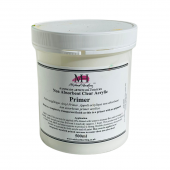
Michael Harding Non Absorbent Acrylic Primer - Clear Transparent
Starting at: £21.20
Michael Harding Non-Absorbent Acrylic Primer (NAAP) is a versatile product suitable for application on various surfaces, including linen, wood, MDF, and more. It is designed to create a robust, flexible, permanent, and intensely pigmented ground, making it an excellent choice for both acrylic and oil paints. Important Application Guidelines: Support Selection: NAAP should not be applied over surfaces treated with rabbit skin/hide glue or on unsound, flimsy supports such as cardboard. Opt for stable substrates to ensure the primer’s effectiveness. Not a Gesso: Please note that NAAP is a primer, not a gesso. As such, there is no need for additional gessoes, sizes, or other ancillary products when using NAAP. DIRECTIONS: Coat Application: Apply a minimum of two coats of NAAP to your chosen support, ensuring liberal coverage for optimal results. Dilution for Flow: If you desire increased flow, dilute NAAP with a mixture of 1 part water to 4 parts NAAP. This adjustment allows for customization based on your artistic preferences. Second Coat Application: Apply the second coat once the first coat is touch dry, typically after approximately 1 hour. This step contributes to the creation of a well-prepared painting surface. Additional Considerations: Suitable Supports: Do not use Michael Harding Non-Absorbent Acrylic Primer on flimsy or unsound supports. It is crucial to choose a stable and well-prepared surface for priming to ensure the longevity and integrity of your artwork. Canvas Weave Consideration: Avoid using this primer on canvases with a wide weave. The non-absorbent nature of the primer may not be suitable for canvases with a loose or open structure, compromising its effectiveness. Transparency Check: Before application, inspect your canvas material by holding it up to the light. If you can see light passing through the wefts (threads) of the canvas, it is not recommended to use Michael Harding Non-Absorbent Acrylic Primer. Opt for a more appropriate primer based on the transparency of your canvas. Learn More -
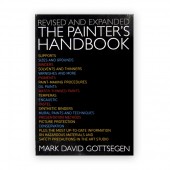
Painter's Handbook
£25.00By Mark David Gottsegen. A guide to artists’ materials as well as a thorough resource presenting techniques for using them and recipes for making them. (355 pages) Learn More -
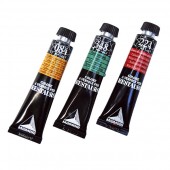
Maimeri Restoration Colours
Starting at: £17.50
33 colours for restoration. Pigments, mastic resin and turpentine. Learn More -
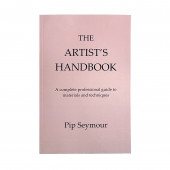
Artist's Handbook
£30.00By Pip Seymour. The Artist’s Handbook provides artists with in-depth, practical information on the materials, equipment and skills necessary for all areas of artistic practice. Topics covered include advice on how to select appropriate art materials, including paints, brushes, canvases and drawing materials; techniques for making your own paints, glue, varnishes and paper; advice on how to achieve the best results from both manufactured and hand-made materials; the best methods of storing and preserving finished artworks, and health and safety precautions. 520 pages. Learn More -
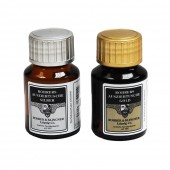
Rohrer & Klingner Gold Drawing Ink
Starting at: £8.10
Drawing Ink (series 29 500). A fine, free flowing pigmented ink. Available in gold and three lightfast traditional tones in shellac binder. Learn More -
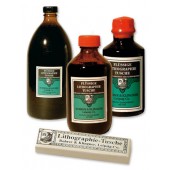
Rohrer & Klingner Lithographic Inks
Starting at: £17.10
Liquid lithographic ink and solid (tushe) lithographic ink are highly resistant against acids and can be used to draw on stone, aluminium and zinc plates. Uses a highly dispersed pigment that is compounded from shellac, wax and soap. While the liquid ink is suited for complete covering, the tushe ink is excellent for halftones and transitions. * Please note that the Litho Tusche now comes in a cylindrical shape, rather than the rectangular stick photographed. Learn More -
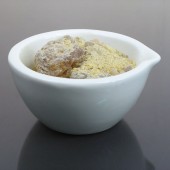
Gum Copal Manila
Starting at: £6.00
Gum Copal Manila is derived from the resin of a coniferous tree native to the Philippines. It is not to be confused with other copals, which are the product of fossilised plant materials. It can be dissolved in alcohol to make a spirit varnish, to be used as a substitute for shellac, or as a fixative for pastel and charcoal drawings. Please note, that when used as a fixative it may darken the colour of the image. Learn More -
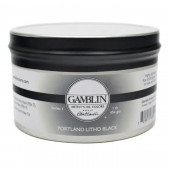
Gamblin Portland Black Litho Ink 1lb
£25.00Artist-grade lithography ink, formulated with high-quality oil and a high pigment load. Learn More -
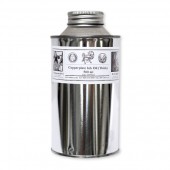
Roberson Copperplate Reducing Oil
Starting at: £24.00
Printing inks can be made by mixing powdered pigments with copperplate oil. Pour small quantity of oil into well of dry pigment and grind with glass muller untill smooth. Thin oil is then added until mixture has consistency of double cream. Thin, Medium or Thick. Learn More -

Gum Benzoin
Starting at: £14.70
Gum Benzoin is used as a fixative, slowing the dispersion of essential oils and other materials into the air. Is occasionally called for in some old varnish recipes where it was employed primarily for its odour. Learn More -
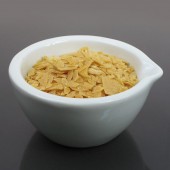
Carnauba Wax Yellow
Starting at: £6.50
Carnauba Wax is the hardest wax commonly used in the production of artists' materials, with a melting point of 83-86°c. It is derived from a tree native to South America, and is available in a natural colour (grey), or a refined colour (pale yellow). Small amounts of carnauba wax are commonly used in both oil painting mediums and encaustic painting, usually in conjunction with beeswax to add toughness, durability and sheen to the paint film. It creates an inflexible surface, so works best on rigid supports such as gesso panels, and it should be noted that it will raise the melting point of encaustic mixtures. It can produce a glossy finish; as such it is used in waxes and polishes for shoes, cars, musical instruments, furniture, and wooden floors, especially when mixed with beeswax and turpentine. Learn More -
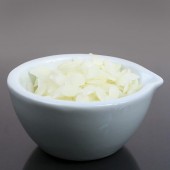
Bleached Beeswax
Starting at: £12.30
Beeswax is derived from melted honeycomb, and is available in two grades. Bleached Beeswax Pellets are white, having been bleached by the sun, and are an appropriate choice for using with pale colours, although they may revert to yellow over time. Natural Beeswax Pellets are yellow in colour, and offer a more flexible structure with a higher resin content. Beeswax has a melting point of 63-66°c, and may turn brown if over-heated. It is the most widely used wax in artists' materials, having a wide range of applications. Please see below for more details.
Learn More -

Carnauba Wax Grey
Starting at: £8.40
Carnauba Wax is the hardest wax commonly used in the production of artists' materials, with a melting point of 83-86°c. It is derived from a tree native to South America, and is available in a natural colour (grey), or a refined colour (pale yellow). Small amounts of carnauba wax are commonly used in both oil painting mediums and encaustic painting, usually in conjunction with beeswax to add toughness, durability and sheen to the paint film. It creates an inflexible surface, so works best on rigid supports such as gesso panels, and it should be noted that it will raise the melting point of encaustic mixtures. It can produce a glossy finish; as such it is used in waxes and polishes for shoes, cars, musical instruments, furniture, and wooden floors, especially when mixed with beeswax and turpentine. Learn More -
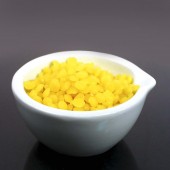
Natural Beeswax
Starting at: £11.20
Beeswax is derived from melted honeycomb, and is available in two grades. Bleached Beeswax Pellets are white, having been bleached by the sun, and are an appropriate choice for using with pale colours, although they may revert to yellow over time. Natural Beeswax Pellets are yellow in colour, and offer a more flexible structure with a higher resin content. Beeswax has a melting point of 63-66°c, and may turn brown if over-heated. It is the most widely used wax in artists' materials, having a wide range of applications. Please see below for more details.
Learn More -
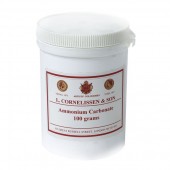
Ammonium Carbonate
Starting at: £9.70
Ammonium Carbonate is a highly Alkaline substance that reacts with the lactic acid present in casein to form a robust binder for tempera paints. It should only be used in a well-ventilated area, please see below for the Material Safety Data Sheet. Learn More -
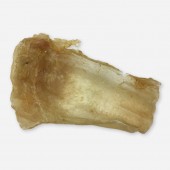
Isinglass
Starting at: £30.10
Isinglass is derived from the dried swim bladders of fish, with Salianski Isinglass being the highest grade available. In the Russian Icon tradition, it commonly provided the glue component in gesso recipes, and was sometimes mixed with pigment to make tempera paints, due to its high binding strength. It can be used to make a pale, clear glue, which is less prone to darkening than other animal glues, and which is particularly flexible, making it a useful material for repairing textiles. Learn More -
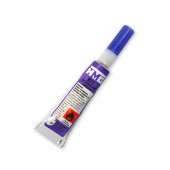
HMG B72 Restoration Adhesive
£7.70B72 Acrylic Adhesive is touch dry in 3-5 minutes, surface dry in 1 hour and hard dry in around 6 hours. Not having instant grab, fragments can be easily re-adjusted and surplus adhesive removed with acetone, making any joint virtually invisible. It’s ideal for repairs to pottery, wood, metal, glass, ivory and many porous substances. 14ml. Learn More -
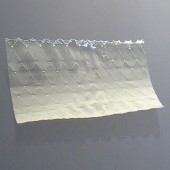
Gelatine Leaf
Starting at: £5.30
A pure form of glue from animal tissue. Used for sizing paper. Used in gliding and for weak sizes in isolating layers in tempera painting. Learn More -

Rabbit Skin Glue
Starting at: £13.00
For sizing canvas prior to priming with an oil based primer. Do not use under acrylic primer. Soak overnight in water. Heat in double boiler (do not boil). Ratio water:size 13:1. Use while still warm. Rabbit Skin Glue does not contain preservatives. 340 - 360 Bloom Learn More
-
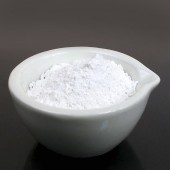
Gesso di Bologna
Starting at: £12.00
Gesso di Bologna is a bright white Calcium Sulphate, or gypsum, from Italy, which can be used as a substitute for whiting in the preparation of gesso. It is ground to a particularly fine powder, which makes it a suitable ground for gilding, as the small size of the particles allows for greater compression when burnishing. Learn More -
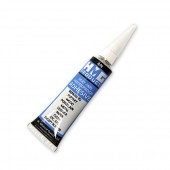
HMG Acrylic Restoration Adhesive
£6.00HMG Acrylic Restoration Adhesive. Heat and waterproof adhesive for repairs to pottery, wood, porcelain, leather etc. Not suitable for use on rubber. 14ml. Learn More -
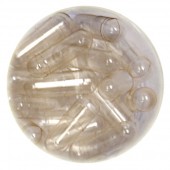
-
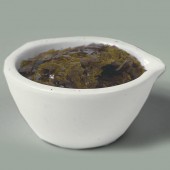
Clear Dewaxed Shellac
Starting at: £9.20
Shellac is a natural resin that is deposited by the female lac insect on the branches of trees in India and Thailand. It is soluble with alcohol, but not with mineral spirits or turpentine. It forms a tough yet flexible film, with many applications. It is suitable as a top coat for gilding when applied thinly, a sealant for porous surfaces, an isolating layer for tempera paintings, a base for pigmented inks, a protective layer for collograph plates, and a warm varnish for wooden floors and furniture. As it is prone to darkening with age, it is not recommended as a varnish for oils, and its solubility can reduce over time. There are various grades of shellac. When mixed with alcohol, it may initially form a cloudy mixture, due to traces of wax in the shellac, but this should become clear once it has dried. The highest grades of shellac are Clear Dewaxed Shellac, which has been de-coloured using the carbon filtering method, Lemon Shellac, and Orange Shellac, which are pale in colour. Button Shellac is less refined and therefore produces a reddish varnish. It was, in fact, widely used as a red dye before synthetic dyes became available. Learn More -
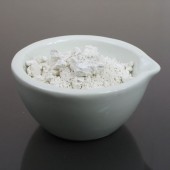
Whiting
Starting at: £4.00
Whiting is powdered Calcium Carbonate, which can be mixed with rabbit skin glue to create a chalk-based ground for oil, tempera, distemper or encaustic painting. Traditionally, whiting was an important ingredient when preparing painting surfaces in the north of Europe, as opposed to gypsum (Calcium Sulphate), which was widely used south of the Alps. Learn More -
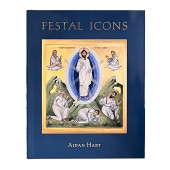
-
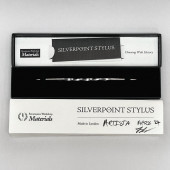
Silverpoint Stylus, Artista. Renaissance Workshop Materials
£215.00Length 170mm. For use on prepared paper. Hand-forged in London from silver bullion. Renaissance Workshop Materials are historically authentic drawing materials and tools, which would be recognisable to the artists of Renaissance Europe. Each product is made in the workshop by hand, using historical methods. Each product is borne from the same historical, European craft tradition, as the drawings and artworks from the Renaissance. In the words of the artisan maker, 'We make these materials in order to experience the historical craft and method of drawing in the most authentic way possible.' Learn More




